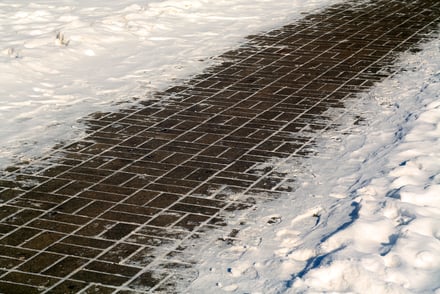If your home or office has a brick foundation, it is an integral part of the structure. It is important to keep the brick and mortar in good condition, but basements present a challenge. The below-grade bricks are subject to harsher conditions, causing mortar cracks. Therefore, it is essential to find out: will tuckpointing fix a damp brick basement?
What is Tuckpointing?
Tuckpointing removes and replaces missing, damaged, or deteriorating mortar between bricks. A professional tuckpointing job on a properly constructed building can last for decades. Exactly how long will depend on the quality of craftsmanship and the correct use of materials for the era in which the building was constructed.
Historic buildings require traditional methods and materials to maintain stability and aesthetics—contractors who use new mortar preparations to replace the lime-based one risk creating further problems and costly repairs. In addition, brick compositions are different (depending on when and how they were manufactured) and react differently to weather and structural pressure. Select a professional specializing in historic buildings when you need brick-and-mortar advice and repair.
Why Are Brick Basements Damp?
Brick is a porous material, meaning it absorbs water. With foundations, wet earth and water sit against the brick, and freeze-thaw cycles can cause bricks to shrink and swell, loosening them. Traditional lime mortar is quite weather-resistant, but it can begin to fail once water gets in between it and the brick.
Is Tuckpointing the Solution?
Since the brick is constantly wicking water, it is not unexpected for a historical building to have a damp basement. Basements can have too much moisture if there is a problem with the mortar or brick, and it is not always the foundation that is the problem. Brick and mortar issues above grade can allow water penetration to appear in the basement. Therefore, it is essential to have the problem evaluated by a tuckpointing professional to determine the source of the excess dampness.
Once the cause of the problem is addressed above grade, professional tuckpointing can then fix the mortar and damaged brick in the basement walls. Combined with a reliable dehumidifier, the dampness problem is resolved with minimal disruption.
Damp Versus Wet Basements
Consider it an emergency if you see water running down the walls or pooling on the basement floor. Many chimneys have openings in the basement, and water collects there. A crumbling chimney should not be ignored but must be fixed immediately if the walls and floors are wet.
Tuckpointing will not fix a significantly compromised basement when the problem originates above grade. This type of water damage often requires foundation specialists who can remediate poor drainage, restore structural stability and apply exterior waterproofing treatments. It takes careful excavation to avoid damaging the brick, expert application of foundation treatments, and an understanding of modern water diversion methods to correct these issues.
A specialist can pinpoint the problem and recommend the best course of action if you have a historic building with a damp brick basement. Contact the tuckpointing experts at Renaissance Development today.
Oct 27, 2022 9:30:00 AM


